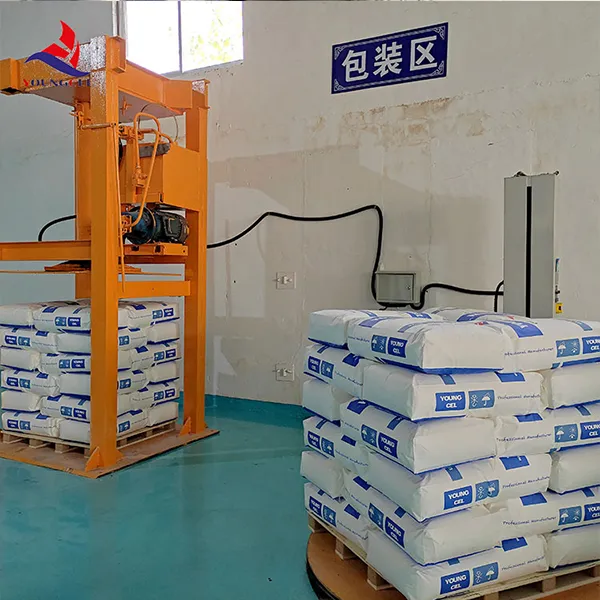Understanding Cellulose Ether RDP Properties, Applications, and Benefits
Cellulose ethers are a class of compounds derived from cellulose, a natural polymer that forms the primary structural component of plant cell walls. Among various types of cellulose ethers, redispersible polymer powders (RDP) have gained significant attention in various industries due to their unique properties and versatile applications. In this article, we will explore cellulose ether RDP, its characteristics, uses, and benefits.
What is Cellulose Ether RDP?
Cellulose ether RDPs are water-soluble polymers created by the modification of cellulose. They are produced through a chemical process that replaces hydroxyl groups in the cellulose with ether groups, making them soluble in water. The term redispersible refers to their ability to return to a homogenous dispersion after being dried. This property makes RDPs particularly useful in various formulations, as they can be easily reconstituted for application.
Properties of Cellulose Ether RDP
Cellulose ether RDPs possess several key properties that make them highly desirable in many applications
1. Thickening Agent RDPs are effective thickening agents that can enhance the rheological properties of formulations. This characteristic is crucial in paints, coatings, adhesives, and other products, where the viscosity must be controlled for optimal application.
2. Film-Forming Ability When applied and dried, RDPs form a continuous film, providing a barrier against moisture, dust, and other environmental factors. This property is particularly beneficial in construction materials, where it enhances durability and performance.
3. Enhanced Workability RDPs improve the workability of mortars and dry mixes used in construction. They allow for better adhesion and a smoother application process, making them favored additives in tile adhesives and gypsum-based compounds.
4. Water Retention RDPs possess excellent water retention capabilities, which is vital for improving the performance of mortar and plaster. This property helps reduce cracking and enhances the bonding strength of materials.
5. Non-toxic and Biodegradable Being derived from cellulose, RDPs are non-toxic and environmentally friendly, making them suitable for applications in industries that prioritize sustainability.
Applications of Cellulose Ether RDP
cellulose ether rdp

Due to their multifaceted properties, cellulose ether RDPs find applications in various industries
1. Construction In the construction industry, RDPs are widely used in tile adhesives, plasters, and other cementitious materials. They improve the bonding strength, workability, and adhesion properties of these materials.
2. Paints and Coatings RDPs are employed in the production of paints and coatings, where they enhance viscosity, improve stability, and create a smooth finish.
3. Personal Care Products In the cosmetics industry, cellulose ether RDPs are used in creams, lotions, and formulations due to their thickening and emulsifying properties.
4. Food Industry RDPs can also be found in the food industry as thickening agents and stabilizers in various food products, ensuring texture and consistency.
Benefits of Using Cellulose Ether RDPs
The use of cellulose ether RDPs offers several advantages, including
- Cost-Effectiveness Their ability to enhance the performance of products can lead to increased efficiency and lower costs in formulations.
- Quality Improvement RDPs contribute to improved product quality by enhancing stability, durability, and overall performance.
- Sustainability As biodegradable and non-toxic compounds, cellulose ether RDPs align with increasing global demands for sustainable and eco-friendly products.
Conclusion
Cellulose ether RDPs are an innovative solution for various industries, combining functionality with sustainability. Their diverse properties and applications make them an essential component in formulations ranging from construction materials to personal care products. As industries continue to seek more efficient and environmentally friendly alternatives, cellulose ether RDPs are likely to play a crucial role in shaping the future of material science and product formulation.
-
Premium Detergent Grade HPMC Hydroxypropyl Methylcellulose: Superior Thickening & StabilityNewsAug.31,2025
-
HEC 100000 Hydroxyethylcellulose for Paint | Superior ThickeningNewsAug.30,2025
-
Wall Putty Rdp Powder Packaging DesignNewsAug.29,2025
-
Introduction to Hpmc Hydroxypropyl Methyl CellulosNewsAug.29,2025
-
Hpmc Industri Grade IntegrationNewsAug.29,2025
-
How to Choose the Right Construction AdhesiveNewsAug.29,2025




